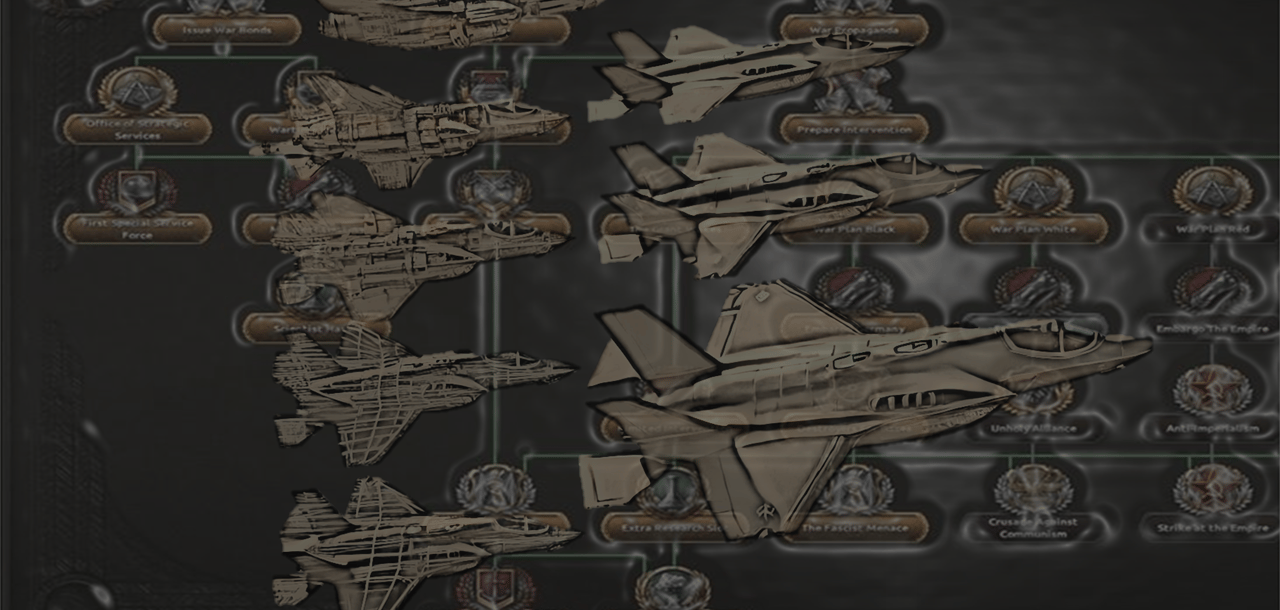Strategizing from 6 cities across the globe
Strategic Alliances in Fighter Jet Innovation: From the F-35 to Sixth-Generation Developments
There is a growing trend toward collaborative development and manufacturing of fighter jets, which enhances cooperation, technological progress, and strategic defense among participating countries. What drives nations to collaborate on the manufacture of fighter jets? And what are the main challenges they face?
DEVELOPMENTARMYWARFARE
Mohammad-Chahir Najib
11/9/20244 min read


In the pursuit of strategic security and proactive defense, powerful nations increasingly rely on their alliances and the joint military advancements of their partners to produce sophisticated fighter jets that bolster their efforts in conflicts. The development of such highly advanced aircraft requires extensive financial resources, intensive effort, specialized expertise, and advanced technological factors that often limit the ability of any single nation or organization to independently manage the process. Consequently, there is a growing trend toward collaborative development and manufacturing of fighter jets, which enhances cooperation, technological progress, and strategic defense among participating countries. What drives nations to collaborate on the manufacture of fighter jets? And what are the main challenges they face?
Advantages of Collaborative Fighter Jet Manufacturing
The practice of purchasing fighter jets through international partnerships represents a strategic and operational approach that offers significant benefits to all participating countries. A prominent example of this is the "F-35" fighter jet program, which involves a partnership between the United States and other countries. This collaboration enables nations to pool their financial and technological resources to address the enormous costs associated with developing advanced aircraft that require many years of research and design. The cost of the "F-35" program has reached approximately $1.5 trillion, an amount that exceeds the financial capacity of most individual countries. The total program cost is expected to surpass $2 trillion over the aircraft's lifecycle, including acquisition, operational fees, and sustainability expenses. To mitigate these escalating costs, Lockheed Martin has implemented strategies to reduce expenses by securing long-term contracts with suppliers, thus achieving bulk purchasing savings and a more stable supply chain. This in turn facilitates better planning and investment in the program.
By distributing these costs across multiple nations, the financial burden on each partner is significantly reduced, making it easier for countries to meet financial requirements. Pooling resources also leads to economic efficiency through shared research, development, and production costs, which reduces expenses for all parties and allows for more funds to be allocated to training and operational readiness.
This approach also enables participating countries to share risks consistently, as each partner contributes to managing the risks posed by fluctuations in demand, project delays, or technical issues. For example, when the Eurofighter Typhoon program faced delays, the participating countries collectively bore the delay, alleviating pressure on each country individually and allowing the project to continue.
Furthermore, this cooperation enhances the exchange of technical knowledge and innovation in design, engineering, programming, and electronics, raising the competency levels and skills of each joint team. In the F-35 program, advanced navigation and control systems were developed thanks to the diverse expertise brought by international partners.
Collaboration among nations also positively reflects the value and efficiency of the final product, as joint expertise contributes to improving the quality of the aircraft and increasing its compatibility with other systems. A significant example is the integration with drones, communication systems, and satellites, where new aircraft can work seamlessly with existing protection and monitoring systems, enhancing the overall capability of the military.
Examples of Multinational Joint Fighter Jet Development
Several high-ranking programs show a clear trend toward multinational fighter jet production, with each initiative relying on financial investments and skills from multiple countries. For instance, the F-35 was developed by Lockheed Martin in collaboration with Northrop Grumman and BAE Systems, involving nine countries including the United States, the United Kingdom, and Italy, alongside other nations like Israel and Japan as security partners and clients.
The sixth-generation Future Combat Air System (FCAS) is supervised by Dassault Aviation and includes France, Germany, and Spain, with major companies like Airbus and Indra participating. This reflects advanced cooperation among these nations in developing defensive capabilities.
Similarly, the Global Combat Air Program for sixth-generation aircraft, also known as Tempest, is an industrial collaboration led by BAE Systems and includes the United Kingdom, Italy, Sweden, and Finland, with primary support from companies like Leonardo and Saab.
Finally, the KF-21 Boramae program in South Korea, in collaboration with Indonesia, aims to produce a new fighter jet by 2040, with Korea Aerospace Industries as the primary contractor along with GE Aviation and Hanwha Systems as partners in this project.
Challenges and Complexities in Collaborative Fighter Jet Production
Despite its benefits, collaborative fighter jet production comes with multiple challenges and complexities, as partnering nations face difficulties related to management and execution. For instance, differences in demands, budgets, and timelines among countries make coordination complex, sometimes leading to conflicts of interest, delays, or even compromises on quality.
Moreover, such programs typically take more than a decade to develop, requiring continuous political and financial support from the partners, which can be challenging to secure. For example, the Eurofighter program faced repeated delays due to funding instability and changes in government policies among the participating countries.
Another source of instability is changes in the policies of partner governments or shifts in program priorities, which may lead to unexpected changes in funding, contribution sizes, or even a country’s complete withdrawal from the program.
Furthermore, the evolving security situation poses an additional challenge, as security developments necessitate long-term programs to frequently adjust objectives, designs, and specifications. This requires continuous adoption of new technologies and responsiveness to emerging threats in a rapidly changing global environment.
Conclusion
Through collaborative fighter jet manufacturing, countries can combine financial and technological resources to create high-tech, costly aircraft that benefit multiple nations. But the question remains: Can these partnerships overcome the complex political and technical challenges and ensure a fully integrated and efficient system that meets future security requirements?
References:
Al Jazeera. (2024, July 25). “The Story of the American Fighter Jet 'F-35' and Its Special Version for Israel”. (2024, November 7). Link
Strategic Evolution in Military Innovation. Defense Arabic, 26 September 2023. (2024, November 7). Link
Collaborative Combat Aircraft (CCA) Programs in the United States. Airforce Technology. (2024, November 7) Link
Defense News (2023). F-35 Sustainment Costs and Affordability Issues. (2024, November 7) Link
National Defense Magazine (2023). Watchdog Calls F-35 Program ‘Unaffordable’. (2024, November 7) Link
Airforce Technology (2023). Collaborative Combat Aircraft (CCA) Programs in the United States. (2024, November 7) Link
